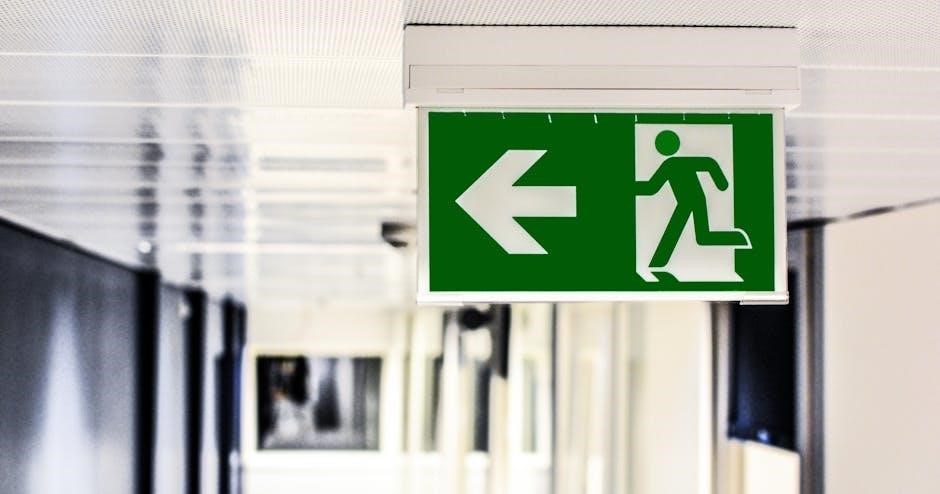Proper care after a root canal is crucial for healing and long-term success. Following your dentist’s instructions ensures a smooth recovery‚ prevents complications‚ and helps maintain the health of your treated tooth.

Immediate Post-Procedure Instructions
After a root canal‚ avoid eating or drinking for 30 minutes to allow the temporary filling to set. Refrain from chewing on the treated tooth and follow your dentist’s specific advice to promote healing and prevent complications.
First 24 Hours
The first 24 hours after a root canal are critical for healing. Avoid chewing or biting on the treated tooth‚ as it may be tender and vulnerable. Stick to soft foods like yogurt‚ soups‚ or mashed potatoes to minimize discomfort. Refrain from consuming hot beverages or foods until the anesthesia wears off to prevent burns. Gently brush your teeth‚ being cautious around the treated area‚ and rinse with warm saltwater to reduce swelling; Avoid flossing near the treated tooth during this period. If prescribed‚ take pain relievers as directed to manage any discomfort. Do not probe the tooth with your tongue or fingers‚ as this could dislodge the temporary filling. Attend any follow-up appointments as scheduled to ensure proper healing. If you experience severe pain‚ swelling‚ or bleeding‚ contact your dentist immediately. Proper care during this period sets the foundation for a successful recovery.

Avoiding Certain Activities
To ensure proper healing after a root canal‚ it’s essential to avoid specific activities that could disrupt the treatment or cause complications. Refrain from chewing or biting on the treated tooth until it is fully restored‚ as this can dislodge the temporary filling or damage the tooth structure. Avoid hard or crunchy foods‚ such as nuts‚ ice‚ or hard candies‚ as they can exert unnecessary pressure on the tooth. Smoking should be avoided during the healing process‚ as it can hinder recovery and increase the risk of complications. Additionally‚ avoid using the treated tooth for opening packages or biting objects‚ as this can cause unintended stress. It’s also important to avoid vigorous physical activities immediately after the procedure to prevent discomfort or swelling. By steering clear of these activities‚ you can protect your tooth and promote a smooth recovery. Remember‚ your dentist may provide specific guidance tailored to your situation‚ so always follow their recommendations closely.
Pain Management
After a root canal‚ some discomfort is normal‚ but it can typically be managed with over-the-counter pain relievers like ibuprofen or acetaminophen; Your dentist may also prescribe stronger medication if needed. It’s important to follow the dosage instructions provided by your dentist or the medication’s label. Pain usually subsides within a few days‚ but if it persists or worsens‚ contact your dentist immediately. Avoid chewing or biting on the treated tooth‚ as this can exacerbate discomfort. Gentle brushing and flossing around the area can help maintain oral hygiene without causing additional pain. If swelling occurs‚ applying an ice pack to the affected area may reduce discomfort. Remember‚ pain management is crucial for a smooth recovery‚ so don’t hesitate to reach out to your dentist if you experience unusual or severe symptoms. By adhering to your dentist’s advice‚ you can effectively manage any post-procedure discomfort and ensure optimal healing.
Oral Hygiene
Maintaining proper oral hygiene after a root canal is essential for promoting healing and preventing infection. Brush your teeth gently twice a day‚ paying special attention to the treated tooth‚ using a soft-bristled toothbrush and fluoride toothpaste. Avoid using harsh or abrasive toothpastes that could irritate the area. Floss daily to remove plaque and food particles‚ but be careful not to floss too aggressively around the treated tooth.

It’s important to avoid using mouthwash immediately after the procedure unless specifically recommended by your dentist. Instead‚ rinse your mouth gently with warm salt water to keep the area clean and reduce swelling. Continue your regular oral hygiene routine to maintain the health of your teeth and gums.
Good oral hygiene practices will help ensure the success of your root canal treatment and prevent potential complications. By keeping your mouth clean and following your dentist’s guidance‚ you can support the healing process and protect your tooth from further issues.
Dietary Recommendations
After a root canal‚ it’s important to follow a diet that supports healing and avoids putting unnecessary strain on the treated tooth. For the first few days‚ stick to soft‚ non-chewing foods like yogurt‚ scrambled eggs‚ and mashed potatoes. Avoid hard‚ crunchy‚ or sticky foods‚ as they can damage the tooth or dislodge any temporary filling.
Chew on the opposite side of your mouth to reduce pressure on the treated tooth. Avoid biting or chewing ice‚ nuts‚ chips‚ or raw vegetables‚ as these can cause irritation or fracture the tooth. Additionally‚ refrain from consuming extremely hot or cold foods and drinks until the sensitivity subsides.
Stay hydrated by drinking plenty of water‚ but avoid using a straw‚ as the suction can dislodge the temporary filling. As healing progresses‚ you can gradually incorporate more solid foods into your diet. However‚ it’s best to wait for your dentist’s confirmation before resuming normal eating habits.
By adhering to these dietary guidelines‚ you can ensure a comfortable and successful recovery after your root canal treatment.
Avoiding Complications
To prevent complications after a root canal‚ it’s essential to avoid certain activities and monitor your healing progress. Refrain from chewing or biting on the treated tooth until it is fully restored‚ as this can cause fracture or displacement of the temporary filling. Avoid eating hard‚ crunchy‚ or sticky foods‚ as they may damage the tooth or disrupt the healing process. Additionally‚ do not use the treated tooth for biting or chewing until your dentist confirms it is safe to do so.
Avoid smoking‚ as it can delay healing and increase the risk of infection. Do not drink through a straw‚ as the suction can dislodge the temporary filling. If you notice any signs of complications‚ such as severe pain‚ swelling‚ or pus‚ contact your dentist immediately.
Attend all follow-up appointments to ensure proper healing and to have the temporary filling replaced with a permanent restoration. By following these guidelines‚ you can minimize the risk of complications and ensure a successful outcome for your root canal treatment;
Follow-Up Care
Follow-up care is a critical component of ensuring the success of your root canal treatment. After the procedure‚ your dentist will schedule appointments to monitor the healing process and complete any necessary restorations. It is essential to attend these appointments to ensure the treated tooth is healing properly and to address any concerns early.
During follow-up visits‚ your dentist may take X-rays to check the progress of the healing and confirm that the infection has been fully resolved. If a temporary filling was placed‚ it will be replaced with a permanent filling or crown to restore the tooth’s strength and function.
Maintaining good oral hygiene practices‚ such as brushing and flossing regularly‚ is also crucial during the follow-up period. Your dentist may provide additional guidance tailored to your specific needs to ensure the best possible outcome. By adhering to the recommended follow-up care‚ you can help prevent further complications and extend the life of your treated tooth.

Recognizing Complications

While root canal treatment is generally safe and effective‚ complications can occasionally arise. It is important to recognize the signs of potential issues to address them promptly. Common complications may include infection‚ swelling‚ or pain that persists longer than expected.
If you experience severe pain‚ swelling‚ or pus near the treated tooth‚ it may indicate an infection. Additionally‚ if the tooth becomes discolored or sensitive to temperature changes‚ it could signal incomplete treatment or nerve damage. In rare cases‚ a root canal may fail‚ requiring further intervention.
Other signs of complications include a bad taste in the mouth‚ a pimple-like bump on the gums near the treated tooth‚ or a crack in the tooth. If you notice any of these symptoms‚ contact your dentist immediately. Early detection and treatment of complications can prevent further damage and ensure the long-term success of the procedure. Your dentist can assess the situation and provide appropriate care to resolve the issue.

Long-Term Tooth Care
Proper long-term care of your tooth after a root canal is essential to ensure its durability and health. While the procedure removes infected tissue‚ the tooth remains vulnerable and requires special attention.
To maintain the tooth’s integrity‚ practice good oral hygiene by brushing twice daily and flossing regularly. Avoid chewing on hard objects‚ such as ice or hard candy‚ as this can cause the tooth to fracture. If your dentist recommends a crown‚ it is crucial to have it placed to protect the tooth from further damage.
Over time‚ the treated tooth may become more brittle‚ so cautious use is advised. Attend routine dental check-ups to monitor the tooth’s condition and address any potential issues early. By following these steps‚ you can extend the life of your tooth and enjoy optimal oral health. Proper care ensures the root canal treatment remains successful for years to come.

Emergency Situations

While root canal procedures are generally safe‚ emergencies can arise if proper aftercare instructions are not followed. Recognizing these situations early is crucial to prevent further complications.
If you experience severe pain‚ swelling‚ or signs of infection‚ such as redness or pus near the treated tooth‚ contact your dentist immediately. These symptoms may indicate an incomplete treatment or a new infection.
In case of a cracked or broken tooth‚ avoid chewing on it and seek emergency dental care to prevent further damage. If you accidentally dislodge or lose a temporary filling‚ cover the tooth with a damp cloth or gauze to protect it until you can see your dentist.
Do not attempt to treat the issue yourself‚ as improper interventions can worsen the condition. Instead‚ follow the urgent care instructions provided by your dentist. Prompt action in emergencies ensures the best outcome for your tooth and overall oral health.

Patient Compliance
Patient compliance plays a crucial role in the success of root canal treatment. Adhering to your dentist’s instructions ensures proper healing‚ prevents complications‚ and maintains the longevity of the treated tooth.
Failing to follow post-procedure guidelines can lead to treatment failure or the development of further issues‚ such as infection or tooth fractures. It is essential to attend all scheduled follow-up appointments to monitor the healing process and complete any necessary steps‚ like placing a permanent filling or crown.
Patients should also take prescribed medications as directed‚ such as antibiotics or pain relievers‚ to manage discomfort and prevent infection. Avoiding prohibited activities‚ like chewing on hard objects or smoking‚ is vital to safeguard the treated tooth and promote recovery.
By actively following the recommended care routine‚ patients demonstrate their commitment to achieving the best possible outcome; Compliance not only ensures a smooth recovery but also helps maintain overall oral health and function.
Proper aftercare following a root canal is essential for ensuring the long-term success of the procedure and maintaining oral health. By adhering to your dentist’s instructions‚ you can promote healing‚ prevent complications‚ and extend the life of your treated tooth.
Key steps include practicing good oral hygiene‚ avoiding harmful habits like chewing on hard objects‚ and attending follow-up appointments. Managing discomfort with prescribed medications and adhering to dietary recommendations also play vital roles in recovery.
Compliance with these guidelines not only supports the healing process but also helps maintain the functionality and aesthetics of your smile. By taking an active role in your aftercare‚ you can ensure a smooth and successful recovery‚ preserving your natural tooth for years to come.

